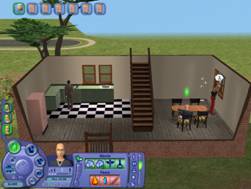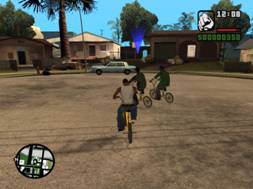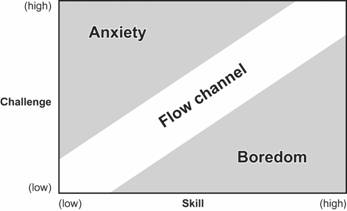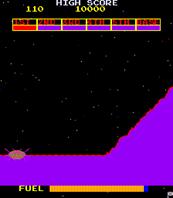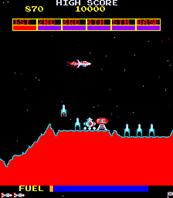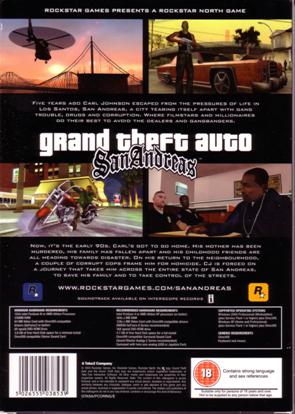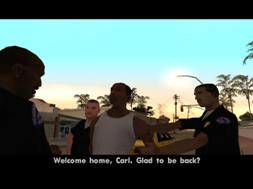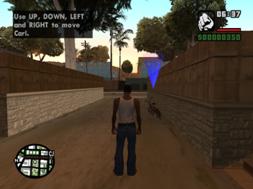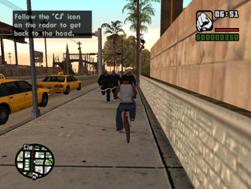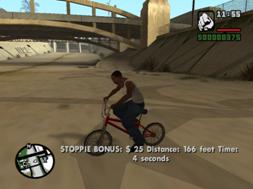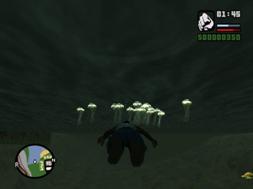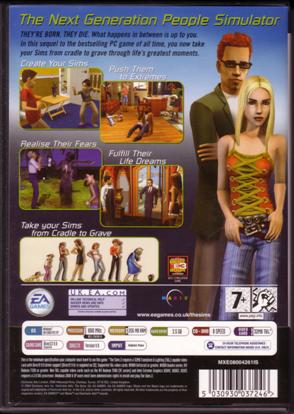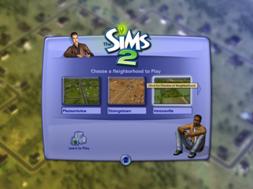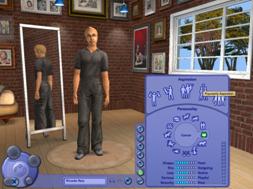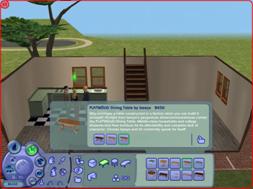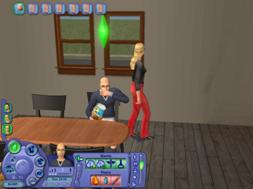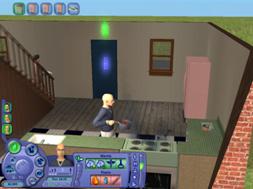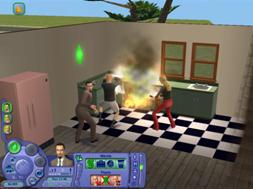Without a GoalOn open and expressive games
Goals in GamesAccording to a widespread theory, video games are goal-oriented, rule-based activities, where players find enjoyment in working towards the game goal. According to this theory, game goals provide a sense of direction and set up the challenges that the players face. However, the last few decades have seen many things described as "games" that either do not have goals, or have goals that are optional for the player: Sims 2 (Maxis 2004) has no stated goals, but is nevertheless extremely popular. The also popular Grand Theft Auto: San Andreas (Rockstar Games North 2005) is superficially a goal-oriented game, yet the game allows the player to perform a wide range of actions while ignoring the game goal. San Andreas is in many ways as different from Sims 2 as can possibly be: Where Sims 2 has no goal, San Andreas contains an explicit goal. Where San Andreas is infamous for being immoral and violent, Sims 2 is famous for its family-friendliness. Yet San Andreas and Sims 2 are fundamentally similar in that they are top-selling, open and expressive games, games that let the player use them in many different ways, games that allow for many different playing styles, for players pursuing personal agendas.
Sims 2 (Maxis 2004) Grand Theft Auto: San Andreas (Rockstar Games 2005) These two games demonstrate that removing or making optional the goals of games can make way for new types of player experiences. While goals provide a sense of direction and a challenge in games, they can also limit the player: A goal means that the player should work towards the goal, rather than follow his or her personal inclinations. Based on an examination of Sims 2, San Andreas, and the arcade game Scramble (Konami 1981), I will argue that popular games without enforced goals generally have large expressive potential and provide a wide range of possible experiences: the Sims 2 player can create any kind of family and decorate the house; the San Andreas player can ignore the goal for a while and focus on practising bicycle stunts or exploring the countryside. Removing or weakening the goals of games affords a wider range of player experiences: where competitive multiplayer games or traditional action games force players to focus on optimizing their performance in relation to the goal, these games let players make decisions based on other criteria: The Sims 2 player buys not the optimal chair, but a beautiful chair. A Complete Theory of Video GamesThere is a popular theory that could be called the complete theory of video games. It is a theory that describes the complete connection between the game artefact, the gameplay of the game, and the experience of the players, while allowing for variations between individual player tastes and skills. This is the theory:
It is a theory that has been presented in many guises. In its most concise form, Sid Meier (designer of Civilization and other classics) has said that "A game is a series of interesting choices" (Rollings and Morris 2000, 38). That is, that a game's quality hinges on it presenting interesting mental choices and challenges to the player. In a more elaborate version, Raph Koster's book A Theory of Fun (2005) focuses on humans as pattern matchers that seek to find the pattern in any game, and find the game boring once the pattern has been found. The theory's focus on challenges is supported by Mihaly Csikszentmihalyi's work on flow (1990). Flow is a highly positive mental state that people reach when they are met with a situation with a "challenging activity that requires skills" (p.49), and "clear Goals and Feedback" (p.54). People in a state of flow report (among other things) a loss of self-consciousness and an altered sense of the passing of time. Csikszentmihalyi describes a flow channel, which is the balance between a challenge being too easy (leads to boredom) and too hard (leads to anxiety). When a challenge corresponds to a person's skill level, the person will enter a state of flow.
The flow channel. (Csikszentmihalyi 1990, 74) This theory entails the important assertion that the primary interest for players is in mastering the game rules, but that the fiction of the game is of lesser importance1. The sociologist Erving Goffman has described this as the rules of irrelevance: [Games] illustrate how participants are willing to forswear for the duration of the play any apparent interest in the aesthetic, sentimental, or monetary value of the equipment employed, adhering to what might be called rules of irrelevance. For example, it appears that whether checkers are played with bottle tops on a piece of squared linoleum, with gold figurines on inlaid marble, or with uniformed men standing on colored flagstones in a specially arranged court square, the pairs of players can start with the ‘same’ positions, employ the same sequence of strategic moves and countermoves, and generate the same contour of excitement. (Goffman 1972, 19) As such, this complete theory of games describes the connection between the formal properties of a game (rules and goals), the subjective player experience, the player's use of a game over time, and variations between different players. The theory also explains why goals are so important since goals set up the challenge of the game: Without a goal, there is no well-defined challenge. The theory indrectly points to the limits of the traditional goal-oriented game. Clear goals also mean clear failure, which may not suit a specific player since different players have different levels of frustration tolerance. Goals may also run counter to what the player wants to do: Players may care more about the aesthetic or sentimental value of game choices than about the optimal way of playing the game. Games with goals afford certain types of experiences well, and leave less room for others. What makes a goalTo say that a specific game has a goal is to say that it is an activity which contains an imperative: in a game, some of the possible outcomes are assigned positive values, and players should work towards these positive outcomes (Juul 2003). This means that a commercial game has to communicate its goal in some way. It also means that soccer pitches or soccer balls do not have goals, as they are not activities. The game of "soccer" has a goal - we use the term "soccer" to denote a specific activity with goals. That Sims 2 does not have a goal means that no clear value has been assigned to the different events and outcomes of the game. Sims 2 can be played with specific goals in mind, but "Sims 2" refers to a game without goals: Sims 2 is like a soccer ball that can be used for a variety of goal-oriented and goal-less activities. At the same time, games differ in the extent to which they force the player into pursuing the goal. In many multiplayer games, there is strong social pressure towards pursuing the goal as the teammates or opponents may refuse to play with a player that does not pursue the goal (a spoilsport). In single player games, the issue is more to what extent it is possible to pursue personal goals rather than the official goal. Additionally, a goal does not mean that the game can be completed. A goal can be to achieve as high a score as possible. This is the standard type of goal in the arcade game, for example in the arcade game Scramble. Scramble: Obligatory GoalsScramble is representative of the way goals were constructed and communicated in early arcade games. The Scramble cabinet states the following: * Object of game is to invade five SCRAMBLE defense systems to destroy THE BASE. * Use joystick to move up, down, accelerate, and decelerate. * Use Laser and bombs to destroy rockets, fuel tanks, mystery targets and UFO's. * Hit fuel tanks for extra fuel for AIRCRAFT. * Bonus AIRCRAFT at 10,000 points. (Arcadedocs.com 2005) The goal of Scramble is also indicated by way of a taunting text on the main screen: "How far can you invade our scramble system?" As such, the explicitly stated goal of the game, to get as far as possible (destroying the base restarts the game) is unambiguous, but there is a second implicit goal, to get a high a score as possible. The question here is to what extent it is possible to ignore the goal of the game when playing. As a first experiment, we can try invading the Scramble system not as far, but as short as possible. This is in actuality very easy but not terribly satisfying: the game allows us to simply drive the aircraft into the ground immediately three times, yielding a total score of 110 points.
Scramble (Konami 1981): Avoiding the game goal by driving the aircraft into the ground immediately. Since Scramble scrolls the screen right to left at a steady pace, the player has no option but to "invade the scramble system" - otherwise the game will end2. As an alternative strategy, we can see whether Scramble accommodates a "subversive" pacifist playing style where the player does not attack anything. This is prevented by a basic mechanic of Scramble in that the player runs out of fuel and must replenish by attacking the fuel tanks stationed on the bottom of the screen. Failing to do so renders the aircraft uncontrollable and leads to a crash.
Scramble (Konami 1981): Refusing to fire any shots leads to the aircraft running out of fuel. In any prolonged playing of Scramble, the player is forced to work towards the goal, and to some extent also forced into using a specific playing style. These are characteristic traits of the traditional arcade game, where goals have a number of recognizable features:
With clear goals, clear challenges and clear feedback, the traditional arcade game fits the complete theory of video games very well. San Andreas: Optional GoalsThe Grand Theft Auto series of games nominally shares an emphasis on goals with the arcade game, but is in actual play a very different experience.
Back cover for Grand Theft Auto: San Andreas The back cover of Grand Theft Auto: San Andreas states: Now, it's the early 90s. Carl's got to go home. His mother has been murdered, his family has fallen apart and his childhood friends are all heading towards disaster. On his return to the neighborhood, a couple of corrupt cops frame him for homicide. CJ is forced on a journey that takes him across the entire state of San Andreas, to save his family and to take control of the streets. (Rockstar Games North 2005) The text sets up a goal not entirely unlike that of Scramble: The player should not "invade the scramble system", but "save Carl's family and take control of the streets".
The game begins with a cut-scene showing Carl returning to San Andreas and being met by unfriendly police.
Once the interactive part of the game begins, the player is instructed to get on a bike and follow the radar to return to Carl's old neighbourhood.
This leads to the player meeting old friends and family and beginning a series of missions.
The stated goal of saving Carl's family and cleaning up the streets is achieved by completing the long series of missions that the game presents. Again, this is quite similar to the model of Scramble. What is not similar is the fact that the game does not force the player into pursuing the stated goal. Right from the beginning of the game, rather than following the radar to CJ's old neighbourhood, the player can choose to bicycle around town, improving our cycling skills, practising stunts, even earning money doing this.
Rather than undertaking missions, players can simply bike around.
The player can also chose to explore the countryside, or even go swimming.
This makes San Andreas another type of game, one where the player is free to deviate from the official goal of the game and make up personal goals (improving cycling skills, for example), modify the looks of their character, or simply explore the game world. San Andreas is a game with goals, but the goals are optional. Sims 2: Without a Goal
Back cover for Sims 2. The back cover of Sims 2 states: The Next Generation People Simulator The game is presented as having no specific goal, but rather allowing the player something akin to complete freedom - "what happens in between is up to you". In actuality, the game consists of choosing a town, creating a family or using a predefined family, building them a house, trying to deal with their wants and desires, while trying to make them do what you want them to. Sims 2 does not yield the full control over its characters, rather characters may refuse to do what the player asks them to, couples may dislike each other, and so on.
Sims 2: Choose a town, create or choose a family.
Decorate their new home. A sim using the new furniture. Sims 2 then pulls in several different directions: The game has no imperative, no demands on what the player should do, yet Sims (the characters in the game) generally become miserable if the player does nothing. The game is very open, but it also sets up a path of least resistance where purchasing more items for the Sims and trying to make their personalities match leads them to become happier, which in turn makes it easier to make money for them. Yet, a large part of the home decoration is not as much functional as it is aesthetic. Sims enjoy having chairs and tables, but players can choose between a wide range of chairs and tables, many of which will be functionally identical. Sims 2 allows for precisely the type of consideration that Goffman denied in the quote above - the player can play based on aesthetic considerations. The player does not have to choose an optimal chair, but can choose a beautiful chair. Still, the financial and character personality constraints in the game mean that as player you cannot do what the packaging promises, because much of what happens is not up to you: Sims 2 is not a dollhouse. During my playing of the game, I instructed a character called Cornwall to eat snacks and lunch seven times in a row. I intended Cornwall to eat all the food I had instructed him to eat, but in actuality, a fire broke out in the kitchen, which lead to the nervous breakdown of Cornwall, who was then visited by a doctor.
Cornwall Cap eats snacks. Prepares food. This is my intention: I wish for Cornwall to eat all the food I have instructed him to eat. Yet this is not what actually happens:
Fire in the kitchen. The doctor visits. The events in Sims 2 are not simply up to the player, but result from the interaction between the player and the objects in the game, the whims of the characters, the characters' internal moods, and the financial constraints in the game. As such, Sims 2 is the mirror image of San Andreas: Sims 2 promises absolute freedom, but is a game with many constraints and resistances to the player's plans; San Andreas promises a clear goal, but provides much freedom and allows the player to ignore the goal entirely. Sims 2 does have a general nudging of the player in certain directions: Improving character happiness requires improving their material conditions, and as such the player is not free to play in any way he or she likes. A beautiful chair: Expressive GamesAs outlined, the potential problem with goals is that they may force players into optimizing their strategy rather than doing something else that they would rather do. The last few decades has seen much experimentation with goals. There is a whole class of goal-less games such as Sims 2, SimCity (Brøderbund 1989), and many role-playing games. Additionally, many games with goals put no strong pressure on the player to pursue this goal. Prior to Grand Theft Auto III (2001), games such as Elite (Firebird Software 1985) , Pirates! (Microprose Software 1987), and Super Mario 64 (Nintendo 1996) were among the more prominent games with non-enforced goals. Games without goals or with optional goals can accommodate more playing styles and player types, in effect letting players choose what kind of game they want to play. Not having enforced goals also changes the "rules of irrelevance" mentioned in the Goffman quote earlier: When the player is not under strong pressure to optimize a strategy, the player is afforded room to play for other purposes, such as designing a house that the player finds aesthetically pleasing. If we assume that the "complete theory of video games" provides a reasonable explanation of game enjoyment, these new games pose a problem: If goals provide a challenge that players enjoy working towards, why would anybody want to play a game without a goal? One way to see this is to consider games as vehicles of expression: There is much indication that many players find great enjoyment in creating (and showing off) families and houses in Sims, and exploring and perfecting their clever manoeuvres in the Grand Theft Auto series3. To see games as expressive devices, they can considered as languages: A language can be said to contain a lexicon (the words) and a syntax (the arrangement of the words) (Eco 1995, 21). In this perspective, an expressive game is one that allows players to arrange and combine the elements in the game in a large number of different ways in a way that players interpret to have a wide range of meanings. A game requires an amount of flexibility and openness in order to let the players express themselves through the game. Scramble is not an expressive game because the range of potential events (the lexicon) is very small, and because the game forces the player into playing for the goal (a very rigid syntax). San Andreas and Sims 2 feature a wide range of objects and events (lexicon), while accommodating a wide range of playing styles (syntax). As such, they are very flexible systems for producing meaning. The expressivity of Sims 2 and San Andreas also comes from the fact these games express events that are conventionally meaningful: social interaction, life and death in Sims 2, violence, exploration, social status, skilled performances in San Andreas. As a comparison, Conway's Game of Life (Holland 1998, 136-142) is not a game but a system that generates developing patterns based on a few very simple rules:
An online version of Conway's Game of Life can be seen at Conway's Game of Life technically has a very rich number of combinations (syntax), but can only produce cells that are either on or off (a small lexicon). It has a wide number of possible configurations and patterns, but has very little expressive potential because it does not look like anything; there is no conventional way of interpreting a specific configuration4. The language analogy also illustrates why San Andreas and Sims 2 are not languages: While the games as they appear are the combination of a larger number of objects, the player, unlike the speaker of a language, cannot simply combine objects arbitrarily. These games offer aresistance to what the player may try to do. Sims 2 is not a doll house, as users of a doll house may (more or less convincingly) craft whatever events they want to, but the user of Sims 2 has only partial control and can only modify the house with sufficient in-game money, and can only try to push the characters to do what the player wants them to do. The characters may refuse to abide the player's wishes. The San Andreas player cannot simply fly a car through the air between two buildings, but must rely on the available game physics, resources, and personal skills. This is the limit of the language analogy, and it raises a new question: Why would players not simply prefer a "game" where they could set up any set of events that they wanted, actually "tell a story" as they wished? A first straightforward answer is that the resistance offered by these games is also a challenge as stipulated in the complete theory of video games. A second answer is that though the player may not be able to make the game produce the events that he/she wants, such failure is in itself an interesting event: That is, the lack of complete control over the game events is offset by the interest that lies in trying, and sometimes failing to, control the game. Trying and failing to bring two characters in The Sims together is in itself an interesting event that is also worth retelling, because the failure to execute a plan is interesting in itself. The story I told about trying to make my character eat food with a fire ensuing is much more interesting than had my character simply performed to my wishes. Yet the challenge that makes it hard to use these games as tools for expression, as languages, can be mitigated by use of cheat codes. Cheat codes are not illegitimate hacks, but semi-official game features created by the game developers and purposely "leaked" to the game playing community. In Sims 2, typing "motherlode" gives the player 50.000 credits to spend. Cheat codes are designed to let the player circumvent the challenges of the game and rather set up a game world in the way the player likes. As such, cheat codes can be a way of making games more like languages where the player can combine the elements of the game in the way they want. Cheat codes make games less challenging and more expressive. Problems in the PayoffClear goals place the player in a well-defined position, where the player is at least supposed to optimize his or her strategy in order to work towards the goal of the game. One way to analyze such situations is by way of the field of economic game theory (Neumann and Morgenstern 1953). Economic game theory is not the study of games, as much as it is the study of how to optimally solve certain well-defined problems. For any classic goal-oriented game, we can in principle perform a game theoretical analysis of how to play the game, including what strategies are optimal and what strategies to avoid. However, such an analysis requires that the game has only one measurement of payoff. In game terms, such an analysis assumes that there is a "goal", or more specifically that there is a valorisation of the outcome; that some outcomes are officially sanctioned in the game as better than others. The goal of a game provides a "measure of all things" in the game. In a game with no goal, there is no standard measure of the payoffs. We cannot make a general analysis of optimal strategies for which chair to buy in Sims 2, as there is no fixed scale to measure the strategies against. A strategic analysis can only be made for a specific personal goal such as "maximize Sim happiness with the given resources" or "create a cool-looking house", but not for the game as such. We find the same situation in many role-playing games, and in online games such as World of Warcraft (Blizzard Entertainment 2004), where the game may have a semi-official goal of gaining a higher level in the game, but where actual playing can be a mix of social interaction, exploration, strategic planning, and aesthetic preferences on character creation. In such multiplayer games, we can in principle perform a strategic analysis for various situations such as battling monsters, but in actual play, many other considerations can intervene. In a non-electronic example, researcher Linda Hughes has studied children playing the game foursquare (Hughes 1999). Foursquare can be described as a volleyball/tennis variation played with a ball on four squares chalked on the ground. Players have to hit the ball so that it lands in the square of another player. Failing to return the ball to another square forces the player to leave the game and queue up for when another player fails and a square becomes available again. Hughes observed the children playing with a number of considerations such as helping friends, rather than trying to improve their performance. She concludes: Game rules can be interpreted and reinterpreted toward preferred meanings and purposes, selectively invoked or ignored, challenged or defended, changed or enforced to suit the collective goals of different groups of players. In short, players can take the same game and collectively make of it strikingly different experiences. (Hughes 1999, 94) I think this broad claim needs to be supplemented with an analysis of foursquare: Foursquare is a game without any final outcome, which means that though players may aim at performing well according to the goal of staying in the game, the lack of scorekeeping allows the players to help friends rather than try to maximize their performance. It also means that every possible action can be evaluated by several, sometimes conflicting criteria: Staying in the game or being helpful to a friend or displaying mastery. What evaluation criteria are present depends on the game, and on the context. A version of foursquare played with scorekeeping and cash prizes would likely see very different behaviour from the players. ConclusionsIn this essay, I have sketched the limited, but seemingly "complete" theory of video games with goals, and I have pointed to how games without goals, or with optional goals can work in a different way, allowing players to play according to personal, aesthetic, and social considerations. This does not render the "complete theory" irrelevant; it simply means that the theory has limits. Multiplayer games tend to have an uneasy relation between what is inside the game and what is outside the game. The goal of a game can be considered a social norm for how the player should behave, and the magic circle (Salen & Zimmerman 2004, 95) that delineates the game has the connotation that players should not bring personal feelings into the game and should not bring what happened in the game to bear on non-game events. Two archetypical situations where this is not observed are the cases of the sore loser and of the adult that plays badly in order not to win against a child. The sore loser fails to leave the game properly, and the adult playing badly downplays intra-game goal optimization in favour of an extra-game social consideration. The foursquare example illustrates a specific way of framing a game session where repetition mitigates the impact of the goal: Playing the same card game or action game many times over without keeping an overall score changes the game playing in a direction where maximizing personal performance becomes less of a necessity. In this way, a goal-oriented game can be played as a game without a goal by replaying it numerous times. Outside games, there are number of rule-based activities that do not work very well without goals. Rubik's Cube is only interesting when trying to complete it since it has little expressive potential. Conway's Game of Life is remarkably like Sims 2 in its tension between the player having control and not having control, but Conway's Game of Life certainly lacks the broad appeal of Sims 2. As a commercial product, it is hard to imagine a goal-less abstract game. On the other hand, a number of other rule-based activities are interesting without goals: Musical instruments, Lego, Tangram, playing sequences of games with goals without keeping score. These activities are popular because they allow for a range of discernibly different expressions to be made5.
Games without enforced goals will not replace the classic goal-oriented game, but they open for a wide range of new player experiences as seen in the two quite similar games of Sims 2 and Grand Theft Auto: San Andreas. This is the new style in video games, and an illustration of how contemporary video games are severing the ties to their historical roots in the arcade game, becoming something new and unique, open and expressive.
ReferencesText
Games
AcknowledgementsThanks to Nanna Debois Buhl and Jonas Heide Smith for input and criticism. 1 The relation between rules and fiction is discussed in detail in my book Half-Real (Juul 2005.) 2 This is also a reflection of the game convention that goals are harder to reach than non-goals. (Juul 2005, p.40.) 3 Mary Flanagan (2005) has interviewed Grand Theft Auto players that prefer simply driving around over completing missions. 4 The Latin alphabet can be used for expressive purposes because the combination of letters has a conventional interpretation. It is meaningful only to somebody that knows how to read. 5 This also points to the reason why goal-less games can easily become steeped in controversy. The wide range of player actions - what makes the game expressive - also makes it likely that the player can express something that offends someone. |
